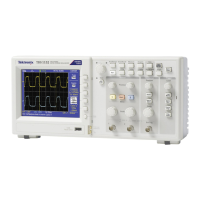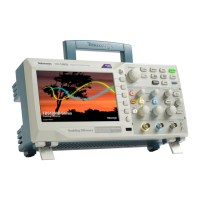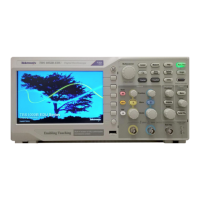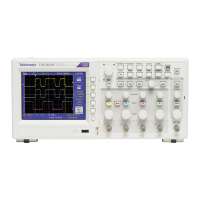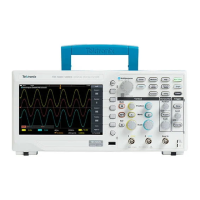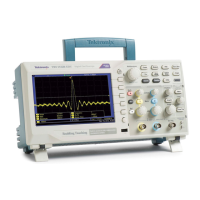Trigger system
External trigger input Included on all models
Trigger modes Auto, Normal, Single Sequence
Trigger types
Edge (Rising/Falling) Conventional level-driven trigger. Positive or negative slope on any channel. Coupling selections:
AC, DC, Noise Reject, HF Reject, LF Reject
Video Trigger on all lines or individual lines, odd/even or all fields from composite video, or broadcast
standards (NTSC, PAL, SECAM)
Pulse Width (or Glitch) Trigger on a pulse width less than, greater than, equal to, or not equal to, a selectable time limit
ranging from 33 ns to 10 s
Trigger source Two channel models: CH1, CH2, Ext, Ext/5, AC Line
Trigger view Displays trigger signal while Trigger View button is depressed.
Trigger signal frequency readout Provides a frequency readout of the trigger source.
Waveform measurements
Cursors
Types Amplitude, Time
Measurements ΔT, 1/ΔT, ΔV
Automatic measurements Period, Frequency, Pos Width, Neg Width, Rise Time, Fall Time, Maximum , Minimum , Peak-
Peak, Mean, RMS, Cycle RMS, Cursor RMS, Phase, Pos Pulse Cnt, Neg Pulse Cnt, Rise Edge
Cn, Fall Edge Cn, Pos Duty, Neg Duty, Amplitude, Cycle Mean, Cursor Mean, Burst Width, Pos
Overshoot, Neg Overshoot, Area, Cycle Area, High, Low, Delay RR, Delay RF, Delay FR, Delay FF
Specifications
118 TBS1000B and TBS1000B-EDU Series Oscilloscopes User Manual

